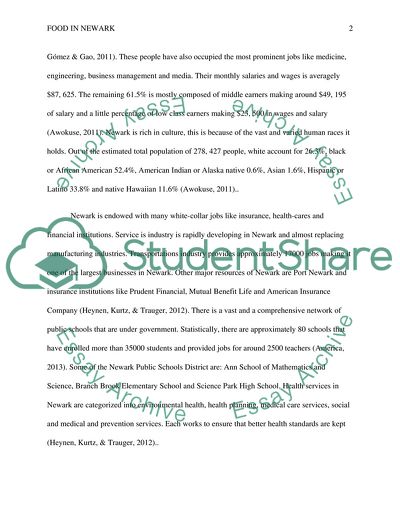Cite this document
(Food in Newark Research Paper Example | Topics and Well Written Essays - 2250 words, n.d.)
Food in Newark Research Paper Example | Topics and Well Written Essays - 2250 words. https://studentshare.org/health-sciences-medicine/1856260-food-security-in-newark-in-relations-to-race-class-and-gender
Food in Newark Research Paper Example | Topics and Well Written Essays - 2250 words. https://studentshare.org/health-sciences-medicine/1856260-food-security-in-newark-in-relations-to-race-class-and-gender
(Food in Newark Research Paper Example | Topics and Well Written Essays - 2250 Words)
Food in Newark Research Paper Example | Topics and Well Written Essays - 2250 Words. https://studentshare.org/health-sciences-medicine/1856260-food-security-in-newark-in-relations-to-race-class-and-gender.
Food in Newark Research Paper Example | Topics and Well Written Essays - 2250 Words. https://studentshare.org/health-sciences-medicine/1856260-food-security-in-newark-in-relations-to-race-class-and-gender.
“Food in Newark Research Paper Example | Topics and Well Written Essays - 2250 Words”. https://studentshare.org/health-sciences-medicine/1856260-food-security-in-newark-in-relations-to-race-class-and-gender.


